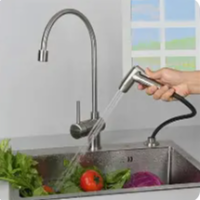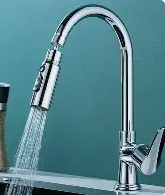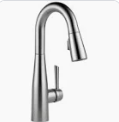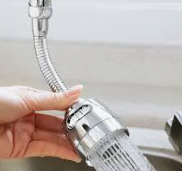Yikes
SAWHORSE
ADA / 11B-606.4 requires that kitchen faucets comply with 309 (no tight grasping, pinching, or twisting of the wrist).
But does this also apply to a handheld sprayer accessory? Is the accessory considered a type of "faucet"?
Examples:
1. A sink is supplied with both an accessible faucet and a second, separate handheld sprayer wand. You grasp and pull the wand/handle to make the nozzle point into the sink, and you grasp / press the button on the wand to make the water come out.
The sprayer is also located towards the rear of the sink (check reach depth vs. waste disposal obstruction below).
Question: if the main faucet complies, must the accessory wand also comply? ADA/11B-212.3 only requires 5% of each type of sink to be accessible. Does that imply that only 5% of water-emitting devices at a sink need to be accessible?

2. In this scenario, the wand is integral to the main faucet spout, but it has a button selector for different spray controls. Still requires grasping and pinching to fully depress the button:


But does this also apply to a handheld sprayer accessory? Is the accessory considered a type of "faucet"?
Examples:
1. A sink is supplied with both an accessible faucet and a second, separate handheld sprayer wand. You grasp and pull the wand/handle to make the nozzle point into the sink, and you grasp / press the button on the wand to make the water come out.
The sprayer is also located towards the rear of the sink (check reach depth vs. waste disposal obstruction below).
Question: if the main faucet complies, must the accessory wand also comply? ADA/11B-212.3 only requires 5% of each type of sink to be accessible. Does that imply that only 5% of water-emitting devices at a sink need to be accessible?

2. In this scenario, the wand is integral to the main faucet spout, but it has a button selector for different spray controls. Still requires grasping and pinching to fully depress the button:




